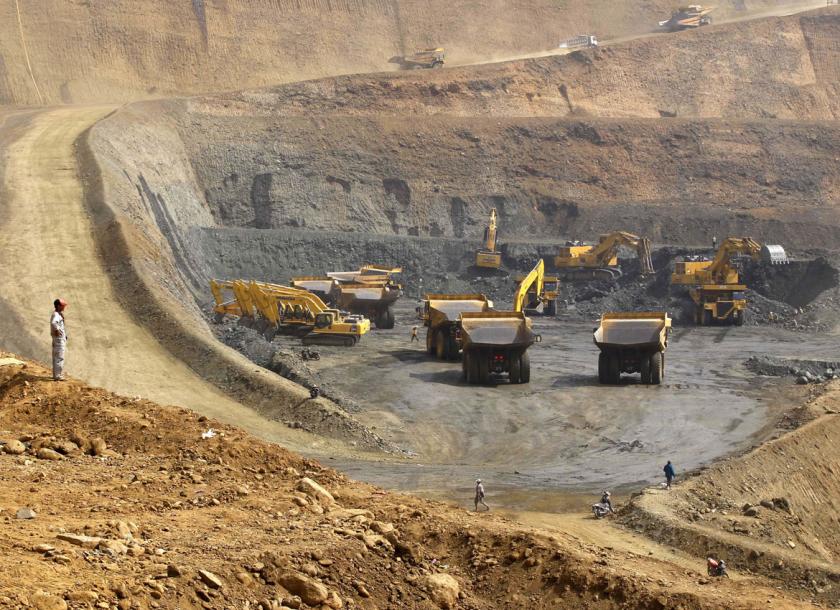Myanmar authorities expect to raise investments and growth in mining industry after the government permitted local and foreign investments in Myanmar’s mining blocks
25 ตุลาคม 2561
Myanmar’s mining industry is expected to expand in next year on the back of higher foreign and domestic investments. And as more permits for small-scale mining in the regions and states will be approved, mineral exports will also improve during the year, U Than Soe, deputy permanent secretary of the Ministry of Natural Resources and Environmental Conservation (MONREC), told The Myanmar Times.
Growth in the sector is expected after the government permitted local and foreign investments in Myanmar’s mining blocks under the new Myanmar Mining Rule enacted in February. Under the new legislation, foreign companies will now be able to invest in large-scale sites of more than 500,000 acres (202,000 hectares) as well as medium scale sites of up to 247.1 acres.
MONREC will also allow investments in small-scale mining sites for gold and other precious metals of up to 4 acres, sites of up to 10 acres for other minerals and sites for raw industrial materials and precious stones of up to 20 acres.
The development is a step forward for Myanmar mining after activities were suspended in 2016 to allow the government to assess the industry’s compliance with environmental rules and regulations.
Growth can be expected at a gradual pace and take place over the long term. “The reason why things cannot move faster within a short timeframe is because the industry must first meet environmental and societal requirements.
Permission to mine will only be granted if the quality of the minerals mined meets the benchmark and the quantity of mine deposits is certain,” U Than Soe said.
This is because minerals like ore and precious stones take millions of years to form so the mining industry needs to be responsible when extracting the resources in order to lessen wastage and environmental damage, he added.
Three-stage process
Under the new law, mining procedures will be conducted in three stages. After the exploration and testing stages, a feasibility study is needed to determine the level of damage and wastage caused as a result of any mining activities.
Allowing production only after the first three stages – exploration, testing and feasibility studies – are conducted will also help companies determine the commercial viability of a mine. If mining at a certain site is expected to yield a return on investment, then a proposal detailing the mining procedure and timeline must be submitted as part of the permit application process.
“If we do not follow the procedures systematically, mining activities could cause severe damage to the environment. We need to determine if production is commercially viable, otherwise the minerals extracted would be wasted. As such, we need to scrutinise each investor to gauge if they are capable of mining on a sustainable level,”U Than Soe said.
“We will work in accordance with the procedures under the law. As such, production may not increase immediately or by large volumes over a short period,” he said.
Investors can commence the three-stage process after signing a contract with the Department of Geological Survey and Mineral Exploration. So far, there have been no issues while reviewing the permit applications of investors. “We have only been slightly delayed because of policy reassessments,” he said.
Investor interest
So far, MONREC has given permission to mining companies from Australia, Thailand and China to commence the three-stage procedure, which could take three to five years to complete.
“Although foreign investments have entered into the sector, the projects are not at the production stage yet and thus, the investment amount is still in small amounts,” said U Than Soe.
However, some regional and state governments have started permitting production activities at small and medium-sized mining blocks. These include resource rich Sagaing, Mandalay, Kachin, Magwe and Shan.
When tendering out mining blocks to investors, the Union government will not include areas which are offered to regions and states.
So far, the permits granted are for unfinished projects applied for in the past. There have been no new foreign proposals yet.In the large-scale mining sector, four out of eight mines operated by foreign companies are ongoing. The large-scale projects are mostly in Sagaing and Taninthayi regions and Shan State.
Meanwhile, some 900 applications made by local investors are currently under review. “We will grant permits to the companies which have submitted complete documentations,” U Than Soe said. The permits are expected to be granted before the end of the year.
In total, US$44.3 million was received from exporting minerals produced by the mining industry up until the second week of October during the 2017-18 fiscal year. During the same period this year, the industry exported around US$40 million worth of minerals, according to the Ministry of Commerce.
(The Myanmar Times: https://www.mmtimes.com/news/growth-mining-industry-expected-investments-rise.html )











